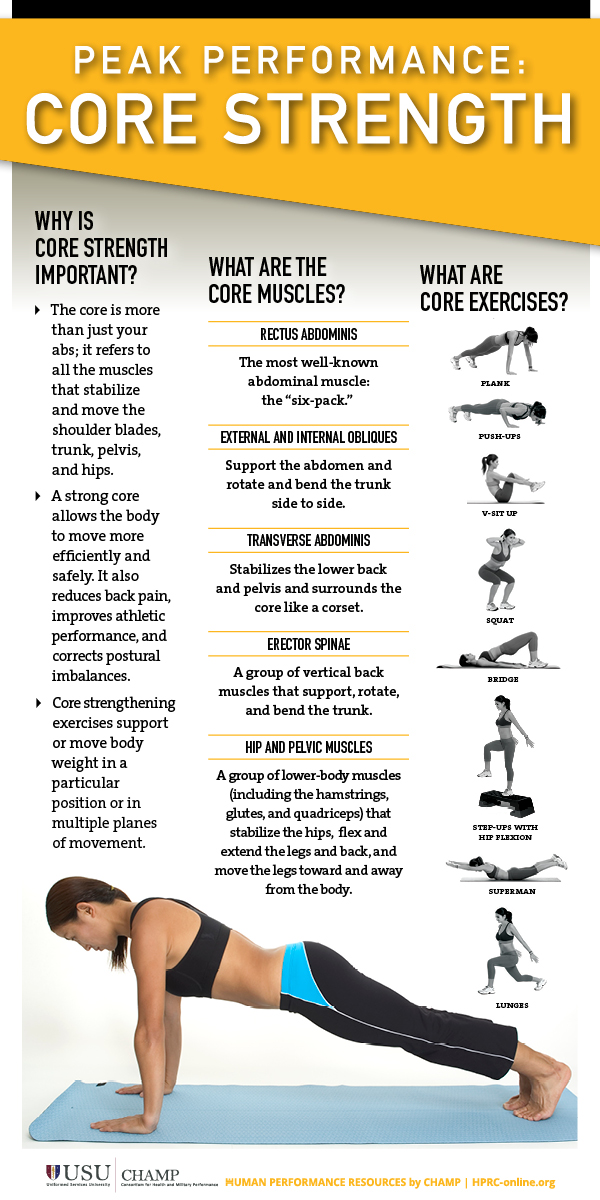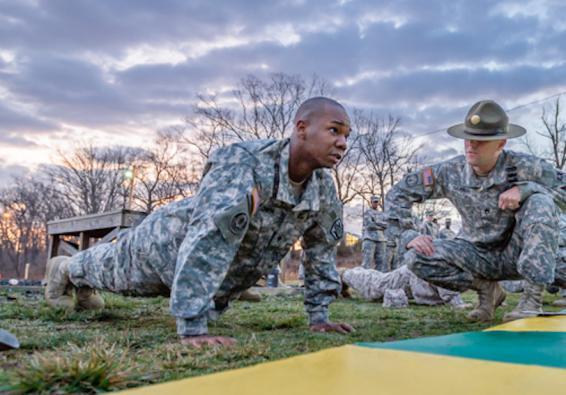Why is core strength important?
- The core is more than just your abs. It refers to all the muscles that stabilize and move the shoulder blades, trunk, pelvis, and hips.
- A strong core allows your body to move more efficiently and safely. It also helps prevent injuries, reduces back pain, improves athletic performance, and corrects postural imbalances.
- Core strengthening exercises support (or move) body weight in a particular position or in multiple planes of movement.
What are the core muscles?
- Rectus abdominis. The most well-known abdominal muscle is also known as the “six-pack.” However, it isn’t the primary core stabilizer. Its main purpose is to be a gross mover, flexing your trunk forward, and limiting the amount it extends backwards.
- External & internal obliques. Support the abdomen and rotate and bend the trunk side to side.
- Transverse abdominis. Stabilizes the lower back and pelvis and surrounds your core like a corset or weight belt.
- Erector spinae. A group of vertical back muscles that support, rotate, and bend the trunk.
- Hip and pelvic muscles. A group of lower-body muscles (including the hamstrings, glutes, and quadriceps) that stabilize the hips, flex and extend the legs and back, and move the legs toward and away from your body.
Examples of core training exercises
- Plank
- Push-up
- V-sit up
- Squat
- Bridge
- Step-up with hip flexion
- Superman
- Lunge

Peak Performance: Core Strength
Why is core strength important?
The core is more than just your abs; it refers to all the muscles that stabilize and move the shoulder blades, trunk, pelvis, and hips. A strong core allows the body to move more efficiently and safely. It also reduces back pain, improves athletic performance, and corrects postural imbalances. Core-strengthening exercises support or move body weight in a particular position or in multiple planes of movement.
What are the core muscles?
- Rectus abdominis: The most well-known abdominal muscle: the “six pack.”
- External and internal oblique: Support the abdomen and rotate and bend the trunk side to side.
- Transverse abdominis: Stabilizes the lower back and pelvis and surrounds the core like a corset.
- Erector spinae: A group of vertical back muscles that support, rotate, and bend the trunk.
- Hip and pelvic muscles: A group of lower-body muscles (including the hamstrings, glutes, and quadriceps) that stabilize the hips, flex and extend the legs and back, and move the legs toward and away from the body.
What are core exercises?
- plank
- push-ups
- step-ups with hip flexion
- V sit-up
- superman
- squat
- lunges
- bridge
USU (Uniformed Services University) and CHAMP (Consortium for Health and Military Performance).
Produced by CHAMP, a Defense Center of Excellence, for the Human Pereformance Resource Center (hprc-online.org).
Published on: October 3, 2022
